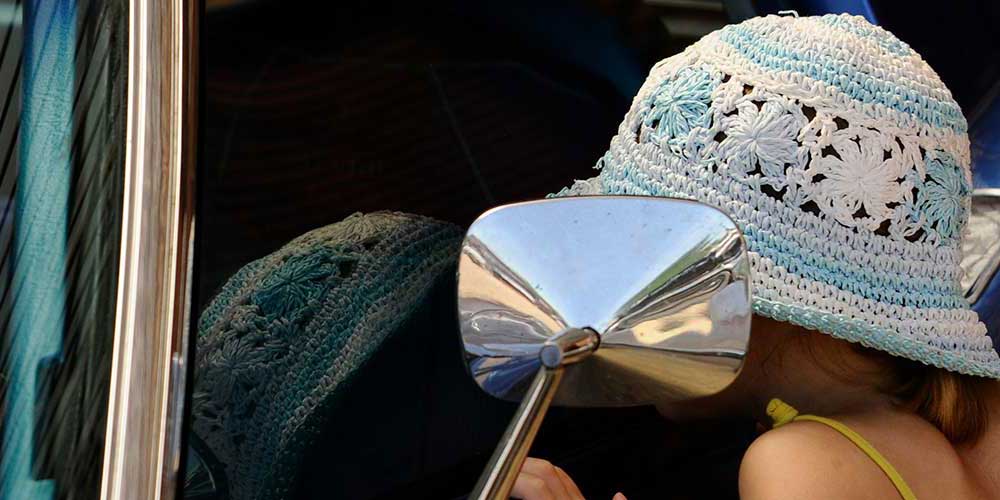By Robert Tate, Automotive Historian and Researcher
Images courtesy of the National Automotive History Collection/Bill & Doris Rauhauser Photo Archive, Detroit Public Library
Published 1.29.2020
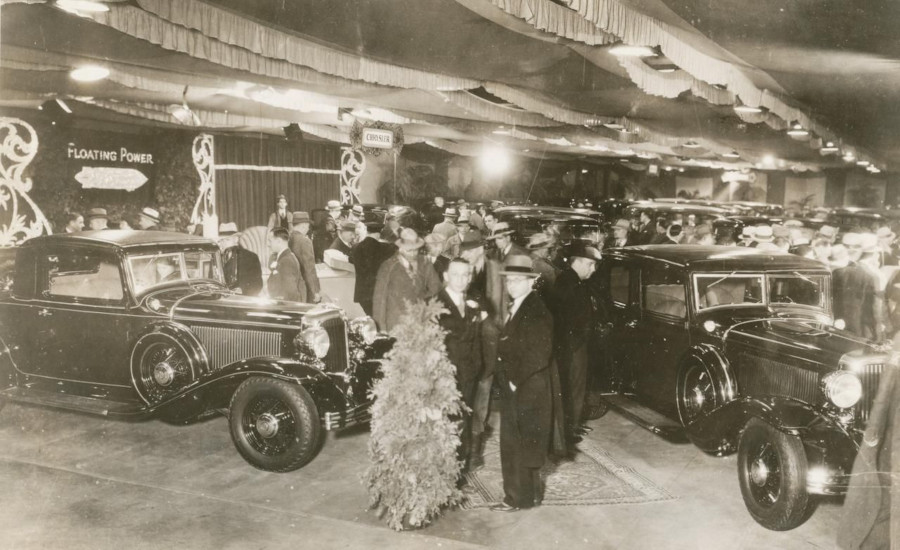 Chrysler display at the 1932 Detroit Motor Show (Chrysler Archives)
Chrysler display at the 1932 Detroit Motor Show (Chrysler Archives)
Car shows come and go, but the Detroit Auto Show goes on brilliantly year after year. Detroit’s first Auto Show was held at the light guard armory in 1899. As the automotive industry grew, so did the Detroit Auto Shows.
According to automotive historians, the 1910 show was something of a landmark. It was the first time that many of the vehicles were exhibited complete with all of their equipment for the customer.
One of the first locations for the Detroit auto shows was the Beller’s Beer Garden on East Jefferson near the Belle Isle Bridge. In 1924, a new convention hall was completed at Woodward and Canfield. Some automotive historians said that the hall contained more exhibition area on one floor than any other showplace in the country. From 1924 through 1940, the Grindley’s Convention Hall was the site of outstanding Detroit auto shows until World War II shut down production.
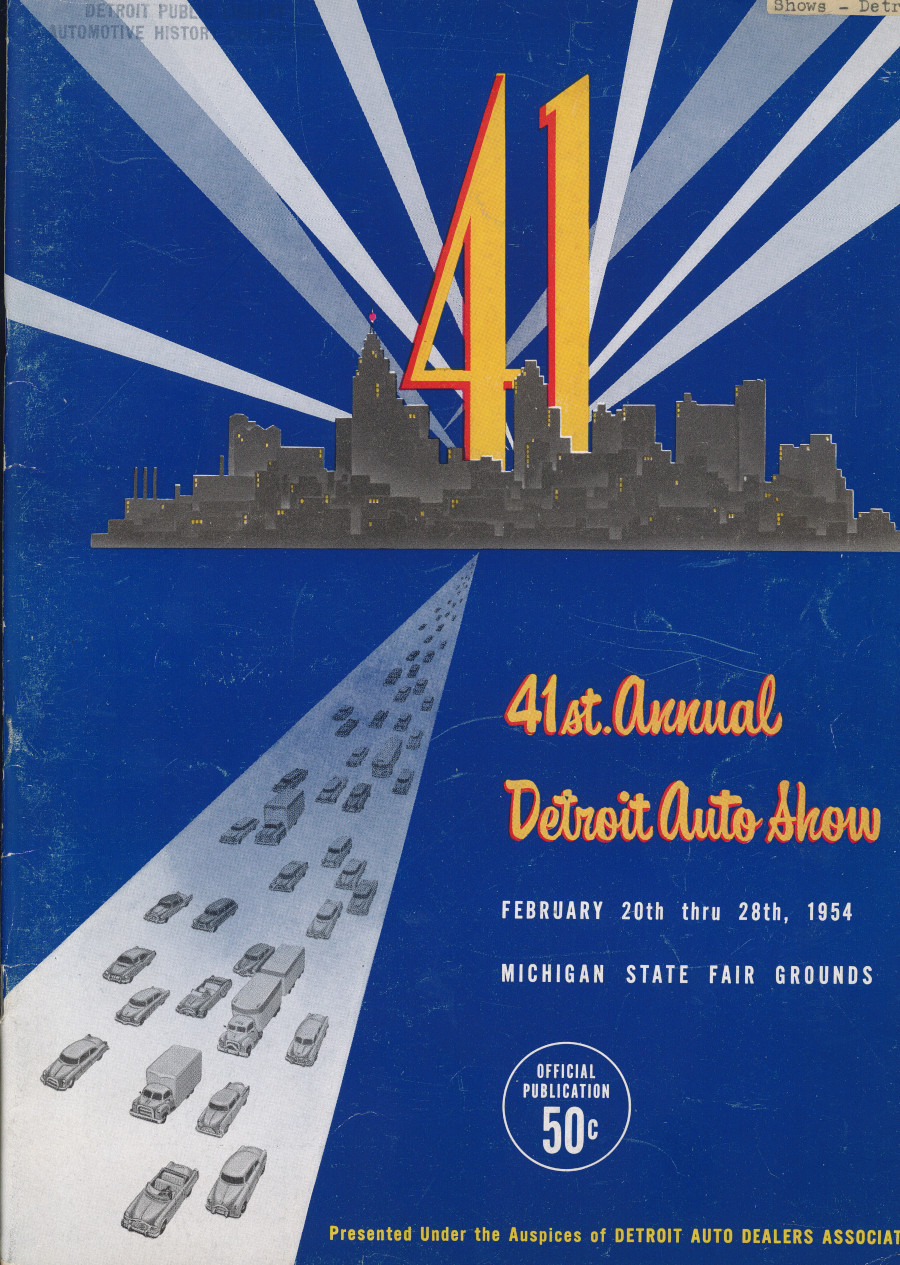 1954 Detroit Auto Show program (National Automotive History Collection)
1954 Detroit Auto Show program (National Automotive History Collection)
During the 1950s, the shows were held at the Michigan State Fair Coliseum for several years. In 1957, the show moved again to the Detroit Artillery Armory on Eight-Mile Road. In 1960, the event became known as the National Automobile Show and moved to another new site -- the recently-completed Cobo Hall in downtown Detroit. It was dubbed “The Biggest Auto Show of All,” and topping the list were the new 1961 car and truck models. The show also featured the “Carousel of Cars” which staged the vehicles around a huge stage area that visitors thoroughly enjoyed. The show attracted over 1.4 million people and was covered by many radio and television stations from across the country. Dwight D. Eisenhower, the nation’s 34th president, even made an appearance, adding prestige, glamor and excitement to the industry banquet.
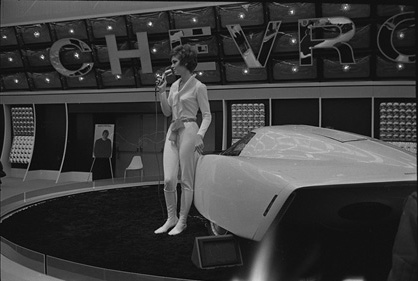 1969 Detroit Auto Show GM display Astro 3 concept (Bill and Doris Rauhauser Photo Archive, Detroit Public Library)
1969 Detroit Auto Show GM display Astro 3 concept (Bill and Doris Rauhauser Photo Archive, Detroit Public Library)
Continuing after 1960, the auto shows at Cobo Hall continued to display and introduce some of the best looking vehicles in the world. The 1970s brought in muscle car fans in to witness the excitement and art of selling horsepower. The 1970 show broke all attendance records. The 1972 show’s theme was “Wheels & Winners,” and the event introduced General Motor’s new experimental safety vehicle (ESV). The ESV model was built by GM to specifications of the U.S. Department of Transportation.
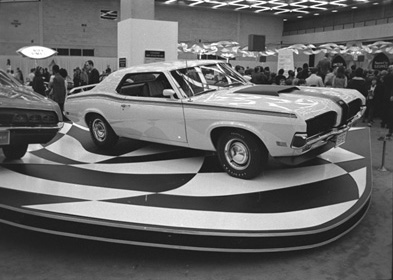 1970 Detroit Auto Show Mercury Cougar display (Bill and Doris Rauhauser Photo Archive, Detroit Public Library)
1970 Detroit Auto Show Mercury Cougar display (Bill and Doris Rauhauser Photo Archive, Detroit Public Library)
The 1980s and 1990s offered many changes with the Detroit show. In January 1989, the event was renamed the North American International Auto Show (NAIAS). Later, a $220 million expansion to Cobo Center was introduced to the public, allowing more domestic and import models to be displayed.
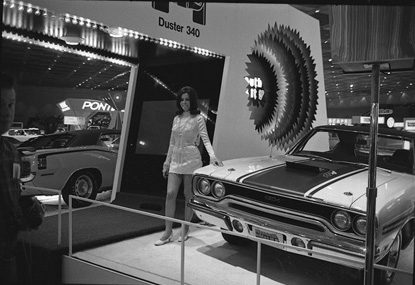 1970 Detroit Auto Show Plymouth display (Bill and Doris Rauhauser Photo Archive, Detroit Public Library)
1970 Detroit Auto Show Plymouth display (Bill and Doris Rauhauser Photo Archive, Detroit Public Library)
During the 1990s, more technology was added to enhance the shows. In 1999, the Ford Motor Company introduced the first major two-story exhibit.
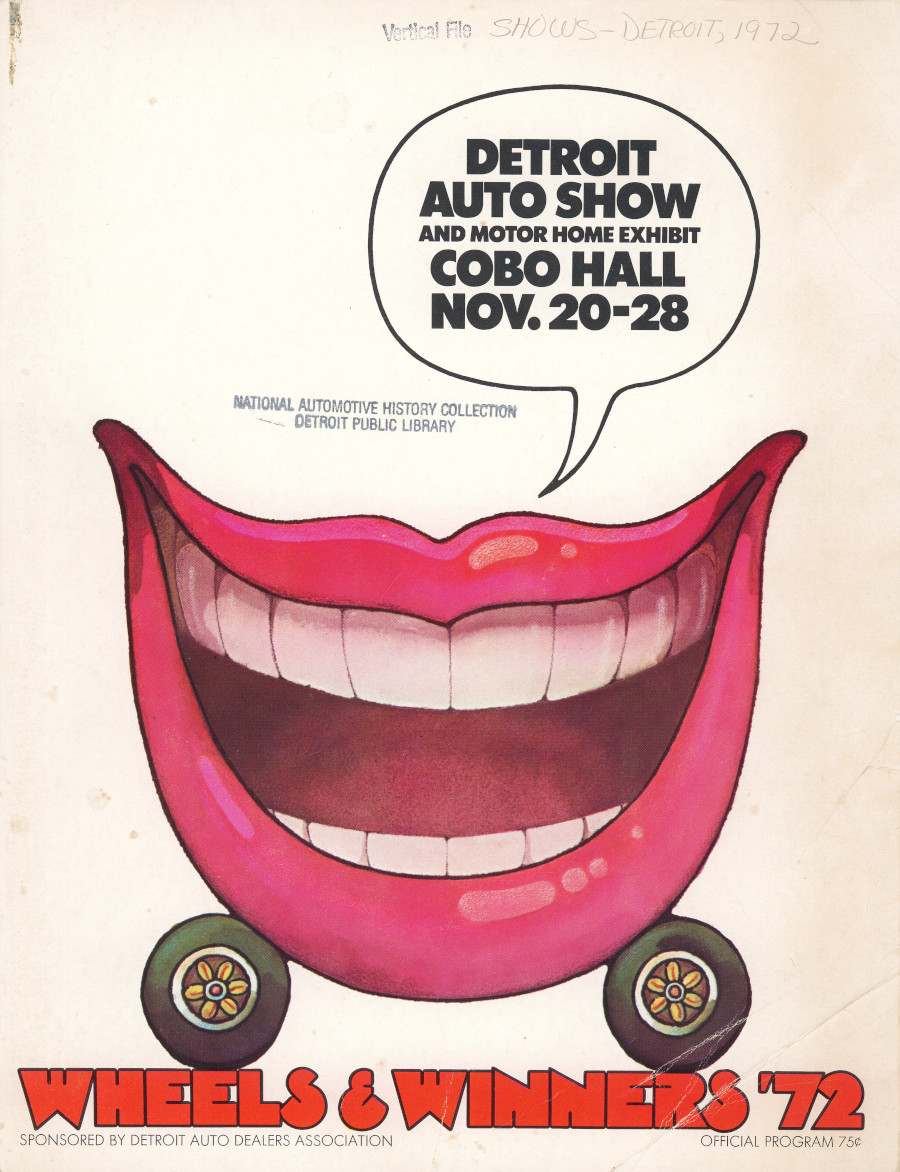 1972 Detroit Auto Show program (National Automotive History Collection)
1972 Detroit Auto Show program (National Automotive History Collection)
Today, the North American International Auto Show continues, but some major changes have been made. The 2020 NAIAS has moved to June, and the public show takes place June 13-20. The theme is “The Wheels Are in Motion,” and the show promises new designs, displays and technology -- an event that the automotive world has never seen before. Consumers will be able to ride and drive vehicles indoors and outdoors, while enjoying more space to take in one of the best automotive shows in the world.
 2003 Detroit Auto Show Cadillac V 16 Concept (GM Archives)
2003 Detroit Auto Show Cadillac V 16 Concept (GM Archives)
Finally, this year’s NAIAS will be spectacular with something for everyone. Watch for all the details and updates at http://naias.com/.
Bibliography
National Automobile Show Official Program, October 15-23 1960.
Detroit Auto Show, Cobo Hall, “Wheels & Winners” 1972 Official Program, November 20-28, 1972.
Benedetti, Marti. “10 Milestones from a Century of Detroit Auto Shows.” Crain's Detroit Business. January 8, 2007.


